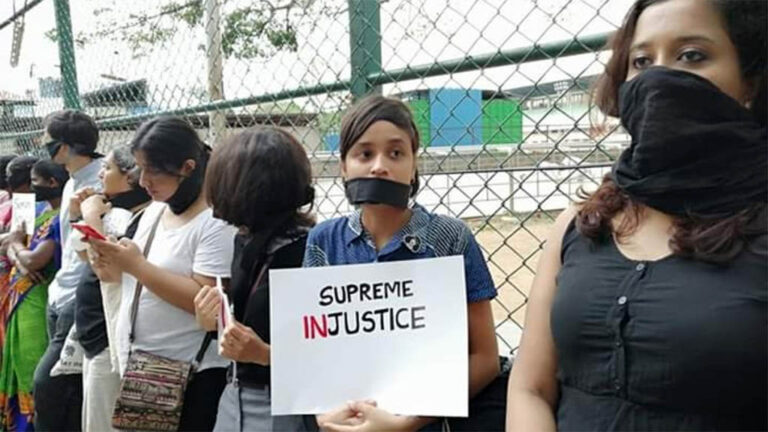A year has passed since #MeToo galvanised online gender activism in India. But as defamation cases rise and the accused remain powerful, activists need to look back at what made online activism so powerful in the first place.
A sharp shudder passed through my body as I read the news. A prominent Indian artist was suing an anonymous Indian Instagram account for defamation. For months, the account had posted testimonies of persons who had faced sexual harassment in the Indian art world. This afore-mentioned artist had been revealed to have been a serial predator. The damage to his image and the actual loss to his financial privilege is difficult for us to estimate, but in the case against the account, he was asking for a distressingly large amount of money as reparation.
When #MeToo reached India in late 2018, it allowed for a rare opportunity to come out into the open and talk about the sexual harassment, assaults, rapes, and micro aggressions that so many of us had faced, especially in the workplace. This ‘movement’ was a privileged corner on the Internet, but it gave us hope and it initiated a sisterhood of shared experiences. We were all activists; we were all owning our stories.
In working environments where the ratio of your gender and the wage gap stand against you, women are conditioned to ignore, minimize, and remain silent about the sexual abuse they face at the workplace. In spite of that, online gender activism in India in the past decade has opened up, become bolder, and employed everything from art to comics to photography to tweets to bite back at misogyny, sexism, and abuse. When the name of the then-Chief Justice of India came up in the accused list, we gathered forces online – Twitter, Facebook, WhatsApp – and got on to the streets, making sure that the media heard. ‘Due diligence’ had failed us and we chose to rely on online sites to, hopefully, open the doors to justice.
As powerful as it was, however, what most women received in return was vicious online harassment and the sight of their harassers continuing to prosper in life. In the place of justice, we are witnessing the rise of defamation cases and blackballing.
A little over a year since #MeTooIndia, we activists are assessing why the movement couldn’t stick strong. Fundamentally, this kind of activism, like any other, is tough when people do not believe the survivors, and give the benefit of the doubt to the accused powerful men. It is tough because even within the Indian feminist circles, online-led activism is a fractured issue. But its limitations come not from the medium, but from the same misogynistic tendencies that cause and sustain abuse. The challenge of proving credibility remains almost always on the survivor and there is no established history of fair trials. Which is why it is important that we continue to build our online activism, in spite of all the doubts and all our fears. We may tip toe, but we must keep moving forward.


